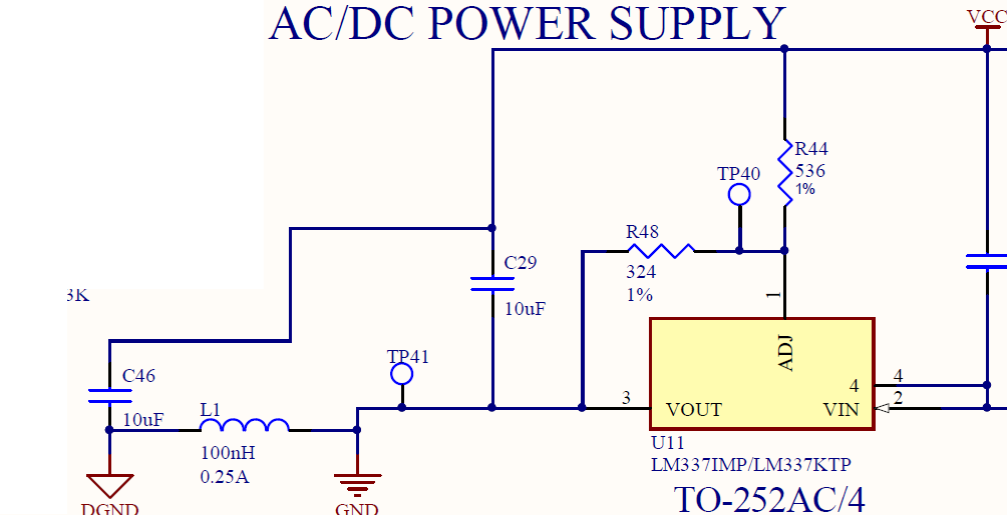Other Parts Discussed in Thread: LM337
Hi,
My customer has the following questions:
For the LM337 for 3.3 V output < 100mA load application:
1- Could ceramic capacitor of 10uF OK for the design on the output regulator for output stability?
2- If a ceramic capacitor is not recommended why?
3- Could be a 10uF Tantalum capacitor OK for the design on the output instead of 1uF recommended on the application note? Datasheet shows tantalum cap must be 1uF
4 - What is the range of the ESR that can be acceptable?
As seen below, tantalum type will be used at C29 per your recommendation. However, C46 is a ceramic type which is mounted at the microprocessor VCC thru a small inductor L1 per microprocessor manufacturers’s recommendation.
The reason for this question came up is the product has been using two 10uF tantalum caps (C29 and C46). But recently we tried to change to 10uF ceramic and it starts showing 300mV ripple on the VCC, especially using the Y5V type. Therefore we wanted to know why.
Thanks!
Chuchen


